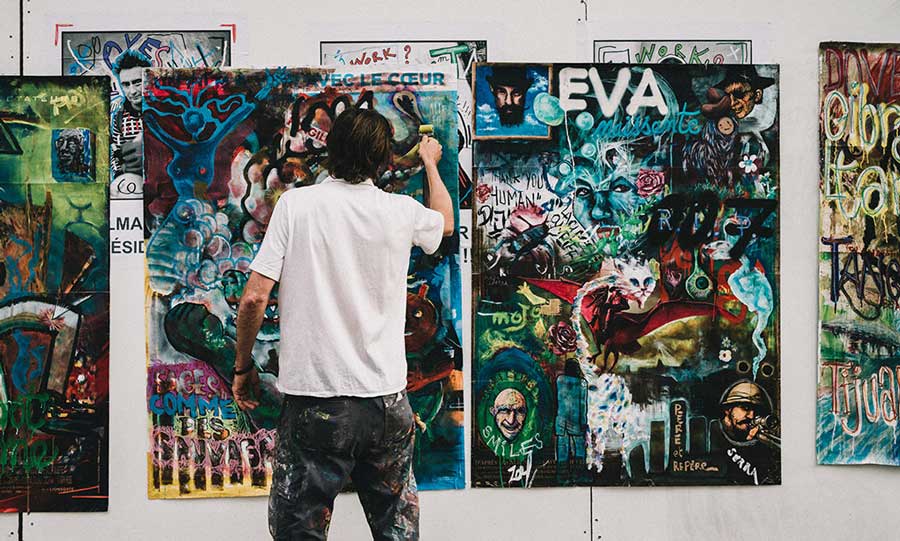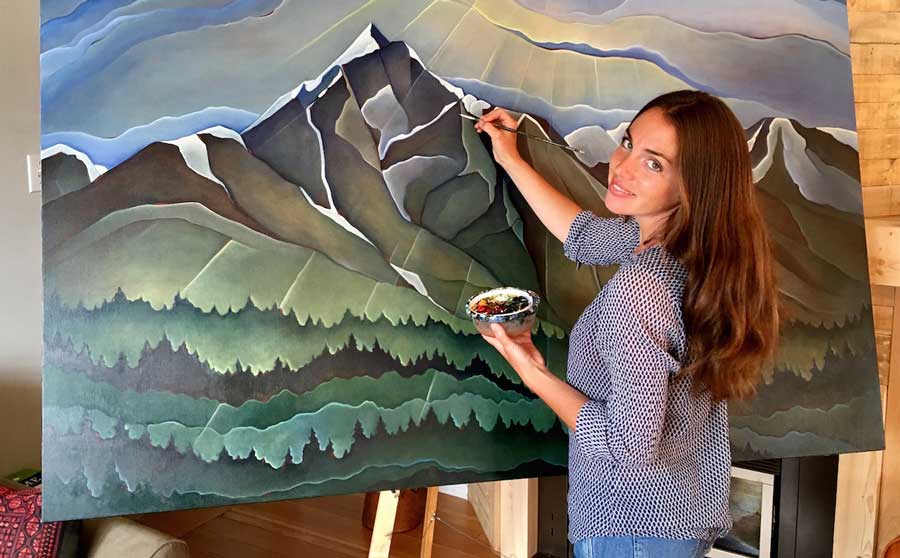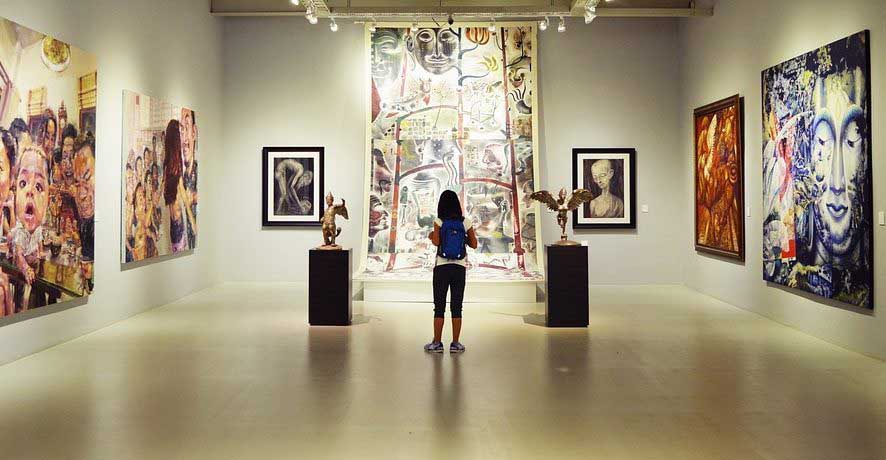Building Your Brand as an Artist (6 Tips to Get Started)
Are you planning to take your passion for art up a notch? Do you dream of creating a brand for exhibiting your art in front of a large audience?
Be it an art fair or online exhibition; your art deserves all the appreciation it gets. And that is when branding comes into action. As they say, an artist’s brand is not just a label, a logo, or a signature-instead, it is one of the most powerful marketing tools you can invest in.
|
Sources for artists during COVID We put together a lis of resources |
If you are an aspiring artist, you might be familiar with how challenging it is for artists to get the much-desired publicity and more extensive recognition. And to combat these issues and challenges, you must invest in building a powerful personal brand to get your artwork into the spotlight. Branding can help you incite the curiosity of a broader audience.
Before we delve into strategies to create an impactful brand, let us revolve around the intricate details.

What is Branding?
Your brand is an explicit recognition of your art. It is something you are known and appreciated for. Powerful branding is the act of becoming known for something that you do, something that makes you stand out of the crowd.
If you are a budding artist, likely, you don’t have an established brand as most large companies do. This directs to the fact that you need to create a brand of your own if you want to gain customers. Whether you are planning to exhibit your art in art festivals or galleries, branding is a crucial aspect.
Here are a few straightforward ways to help you make people recognize your art.
1. Define who you are and brand oneself as an artist
Creating an artist's identity is very challenging. You are required to dig deeper into your artistic persona and find an experience or a streak that makes you stand out. When we talk in marketing terms, this feature of yours can be referred to as your value proposition. The latter is one of the most significant elements of personal branding.
If there is one thing that budding artists should inculcate from Pablo Picasso is that you should never be afraid to state your perceptions and opinions of the world, irrespective of how unconventional and provocative they are.
Defining who you are as an artist and what does your art mean to you can help you make a powerful impact on your audience at art fairs. Deciphering how your art is distinctly different from the work of others can help people relate to you and your art on a more personal level.
2. Define the best thing you can offer to your audience
Carve out some time to sit down and apply yourself to defining the single best thing you do. This will be the thing people will mainly talk about when they discuss your art.
What makes you unique are the life experiences you’ve had which have shaped you as an artist. All you need to do is find what that unique element that is you.

3. Create a key phrase built around your strength
We understand that you might brim with words to describe yourself and your unique abilities. However, you need to remember that a key phrase should be short and very concise. Avoid using ambiguous statements. Look around what your competitors are using statements, learn from their mistakes or successes.
From this phrase you can build a brand!
4. Get the word out - collaborations
There is nothing better than art festivals if you wish to tell people about your brand. You must see if there are opportunities to collaborate on art projects.
Seeing if the established artists in your community will share words of wisdom from their personal experiences can help you bring artists in your network together. There is no way better than by partnering with those who make your art possible for getting more exposure for your art.
5. Present your brand as the complete package
If you want your brand to stand out on the art scene, creating your brand guidelines is the right choice to make. Once you are through with creating an interesting brand statement, you need to make sure that everything you present as your art or masterpiece falls in line with your core values and communicates a message to your audience.
While you are setting your brand guidelines, you need to make sure that all the elements like brand name, logo, tone of voice, and colour palette should stay consistent with the original voice of your artwork and your brand.
All you need to do is incorporate these brand elements into every channel you use for promotion, such as your website, business cards, potential customers, and social media profiles. This can allow potential customers to recognize your brand at first glimpse.

6. Get on the art scene
Now that you have transformed your artistic identity into a well-packaged art brand, the next step would be to promote your art business in art marketing. And there can be no way better than networking to do that. It is one of the most significant steps you need to take to spread the word about your art.
This can be started by participating in various projects in your artistic community. For instance, art fairs, charity events or exhibitions can be the best places to draw much-needed attention to your artwork. Being proactive is the key to create an impactful brand. You need to contact dealers and curators.
Never be afraid to ask established artists from your community for any help. Their extensive personal experience and connections in the art world might be an invaluable asset that is sure to enhance the presence of your art brand in this competitive contemporary scene.
Wrapping it up
Building your brand is a demanding process that requires your full attention. Indulging in art festivals and following these steps can help you create a unique brand for your art.
Once you discover the ways of presenting yourself and share your original perspective with the world, the rest of the process would become much more manageable and effortless.
Author: Micah
Micah, the content manager at FestivalNet shares tips and tricks to sell more at Art & Craft shows and fairs. At the one-stop platform you will find information about the upcoming fairs and festivals in North America. We strive to make it easy for vendors and businesses to find popular events where they can promote their products and brands.








